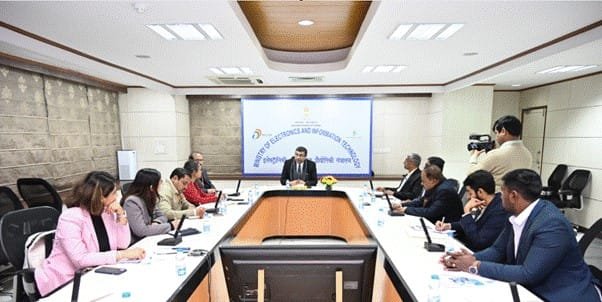FTAs: limited benefits for India
PHD Chamber of Commerce and Industry appreciates the government’s decision to review all existing Foreign Trade Agreements with its various FTA partner countries and groups, as India had very limited benefits from these pacts.
PHDCCI President Dr D K Aggarwal called it an important development for India as there has been a growing concern in different quarters including the industry that the benefits for India have been very limited from these FTAs.
In order to derive greater benefits from the already signed FTAs, the government’s decision to review all existing FTAs is a laudable move, said Dr Aggarwal in a release on 31 Dec 2019.
“We believe FTAs have to be signed keeping two things in mind, mutually reciprocal terms and focusing on products and services with maximum export potential,” said Dr Aggarwal.
India is a fairly open economy with overall trade (exports plus imports) as a percentage of GDP at around 43% in 2018. Indian exports have gradually found their way into new markets and the export sector has moved up the value chain.
It is imperative to note that India has viewed FTAs as an important tool to enhance its trade and investment and signed a number of trade agreements with various countries or groups, said Dr Aggarwal.
Although FTAs are instrumental in creating seamless trade blocs that can aid trade and economic growth, there exist genuine concerns of trade asymmetry as India’s exports to FTA countries have not outperformed overall export growth or exports to rest of the world.
At this time, when the Indian government has decided to review the existing FTAs with different countries or groups and has also decided to not be a part of the Regional Comprehensive Economic Partnership (RCEP) it is pertinent to examine the progress of trade between India and its key FTA partner countries and groups.
The major FTAs signed and implemented so far include South Asia Free Trade Agreement (SAFTA), India–ASEAN Comprehensive Economic Cooperation Agreement, India–Korea Comprehensive Economic Partnership Agreement (CEPA) and India–Japan Comprehensive Economic Partnership Agreement (CEPA).
FTAs have led to increased imports and exports, although this has widened the trade deficit. For example, India’s combined trade deficit with ASEAN (Association of Southeast Asian Nations), Korea and Japan has almost doubled to US$42 billion in FY 2019 from US$24 billion in FY2017 and US$15 billion in FY2011 (with the signing of the respective FTAs).
To harness the export potential of the country, it is suggested that the scope of FTAs need to be widened with the inclusion of services sector. Also, more items and products which hold greater export potential from India’s domestic manufacturers could be added in the ambit to diversify the country’s basket of export offerings, said Dr Aggarwal.
Market access of Indian products in the FTA partner countries and groups need to be negotiated well as the country faces lot of hurdles to reach their markets and supply products to our various FTA partner nations and groups.
The Government should review its existing FTAs in terms of benefits to various stakeholders like industry and consumers, trade complementarities and changing trade patterns in the past decade.
A well-balanced Free Trade Agreement deals addressing the concerns of all the stakeholders is the need of the hour, added Dr D K Aggarwal. fiinews.com











